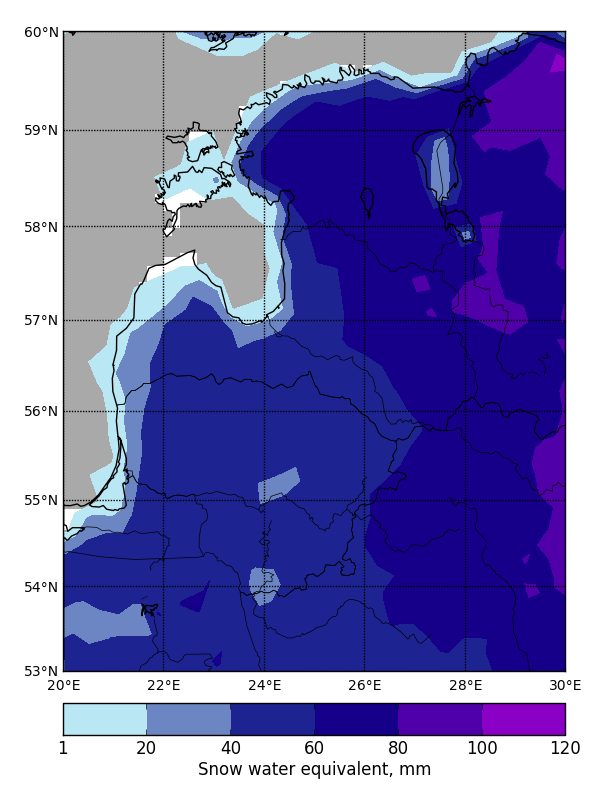Satellite based SWE
The snow water equivalent (SWE) describes the amount of liquid water in the snowpack that would be formed if it were completely melted. SWE is an important measure of availability of water resources, since it relates to the runoff of rivers and variations in groundwater levels.
SWE depends on the amount, depth and density of snow, as well as the age of snow cover. Around the Baltic States, snow cover thickness depends mostly on the monthly mean air temperature and precipitation during the snow cover accumulation period (January-February). Maximum snow depth can occur on the same day as maximum SWE or up to 2 to 3 months prior to maximum SWE. A decrease in snow depth may be an indication of settlement rather than melting in the snowpack. A decrease in SWE does indicate a melt (Farnes, 2013).
SWE can vary greatly between subsequent days due to temperature fluctuations or an influx of freshly fallen snow, so it is not possible to fill SWE data gaps using temporal filtering. Average maximum SWE in the Baltic States varies from 20 mm in the western coastal areas to 120 mm in the continental parts to the east (Fig. 1).
 Figure 1: Average annual maximum SWE (mm) in the Baltic States, 2000-2013. SWE increases from the coastal regions in the west to the continental parts in the east.
Figure 1: Average annual maximum SWE (mm) in the Baltic States, 2000-2013. SWE increases from the coastal regions in the west to the continental parts in the east.
Exercise 11
Choose the correct word to get the true statements about snow water equivalent. (Use the selection box to choose the answer that best completes the statement.)